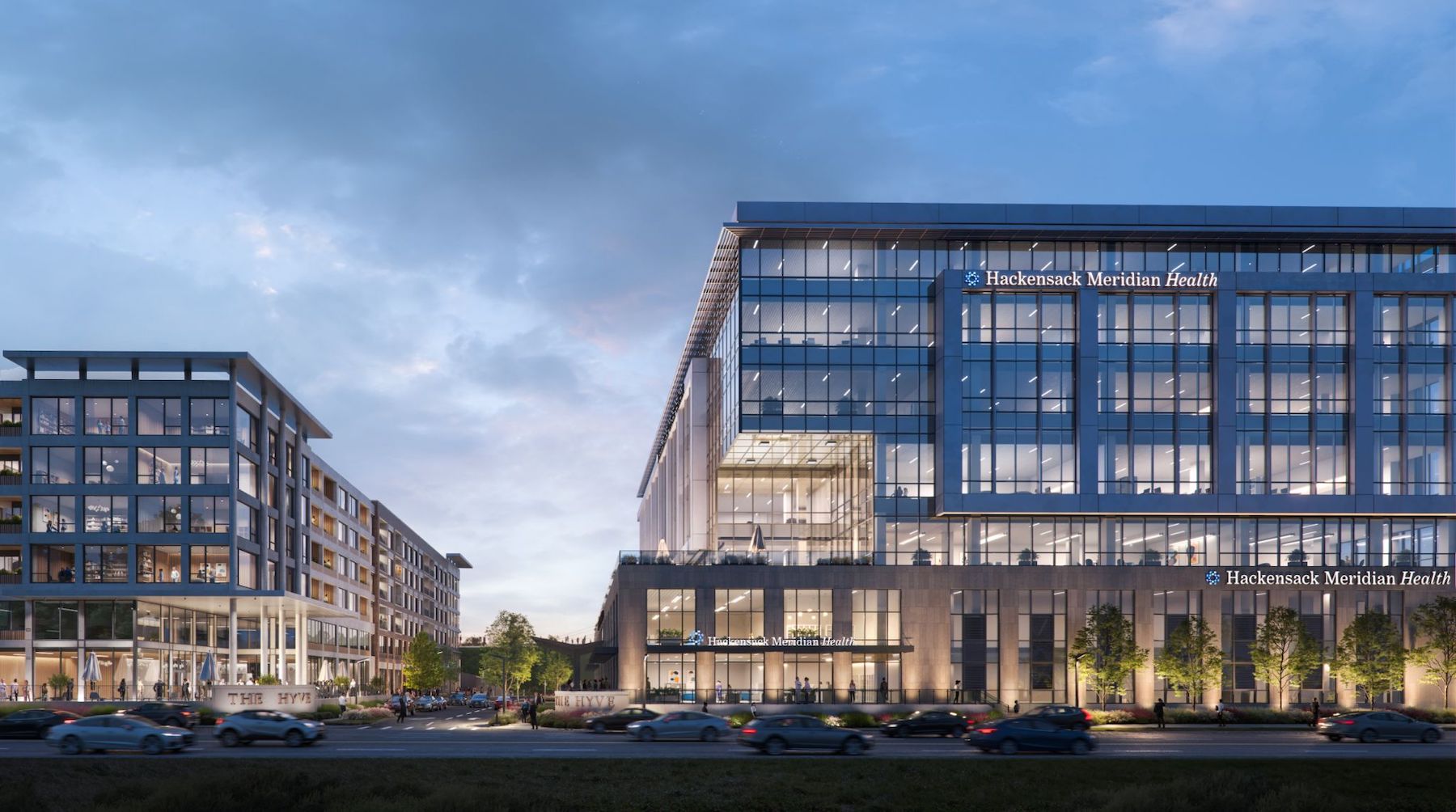Tomorrow, Hackensack Meridian Health, the largest healthcare provider in New Jersey, is expected to break ground on a 60,000-sf Health and Wellness Center that the network claims to be the first of its kind healthcare facility at a mass transit hub. The groundbreaking ceremony will occur at Metropark Station in Woodbridge, N.J., one of the busier terminals along the Northeast Corridor rail system.
The Health and Wellness Center is part of larger redevelopment of Metropark Station valued at $200 million. That development will be executed by DOR, a consortium led by Russo Development, which was awarded a $110 million tax credit grant for the project through the state’s ASPIRE program, which supports transportation development that incorporates community benefits.
New Jersey Gov. Phil Murphy has been championing the modernization of transportation hubs in the state that would make them multi-use locations for residential, office, retail, and restaurants. (Currently, most of the buildings that surround Metropark Station are for corporate offices.) Murphy said, in a prepared statement, that the Health and Wellness Center “marks a major milestone” in realizing his Administration’s “broader vision” for the future of transportation and community health.
Healthcare hub will provide travelers convenient access
The services that the Health and Wellness Center will provide include primary care, medical and surgical specialties, a sports and spine center, advanced imaging, bloodwork, rehabilitation, a retail pharmacy, occupational health, and urgent care.
Robert C. Garrett, Hackensack Meridian’s CEO, said in a prepared statement that 60,000 people travel through Metropark Station each month. When the Health and Wellness facility opens next year, it will provide them “easy access” to healthcare with best-in-class doctors, and will complement the health system’s efforts to address “how social determinants of health are impacting health quality.
Related Stories
| Oct 30, 2014
CannonDesign releases guide for specifying flooring in healthcare settings
The new report, "Flooring Applications in Healthcare Settings," compares and contrasts different flooring types in the context of parameters such as health and safety impact, design and operational issues, environmental considerations, economics, and product options.
| Oct 30, 2014
Perkins Eastman and Lee, Burkhart, Liu to merge practices
The merger will significantly build upon the established practices—particularly healthcare—of both firms and diversify their combined expertise, particularly on the West Coast.
| Oct 21, 2014
Passive House concept gains momentum in apartment design
Passive House, an ultra-efficient building standard that originated in Germany, has been used for single-family homes since its inception in 1990. Only recently has the concept made its way into the U.S. commercial buildings market.
| Oct 21, 2014
Hartford Hospital plans $150 million expansion for Bone and Joint Institute
The bright-white structures will feature a curvilinear form, mimicking bones and ligament.
| Oct 16, 2014
Perkins+Will white paper examines alternatives to flame retardant building materials
The white paper includes a list of 193 flame retardants, including 29 discovered in building and household products, 50 found in the indoor environment, and 33 in human blood, milk, and tissues.
| Oct 15, 2014
Harvard launches ‘design-centric’ center for green buildings and cities
The impetus behind Harvard's Center for Green Buildings and Cities is what the design school’s dean, Mohsen Mostafavi, describes as a “rapidly urbanizing global economy,” in which cities are building new structures “on a massive scale.”
| Oct 13, 2014
Debunking the 5 myths of health data and sustainable design
The path to more extensive use of health data in green building is blocked by certain myths that have to be debunked before such data can be successfully incorporated into the project delivery process.
| Oct 12, 2014
AIA 2030 commitment: Five years on, are we any closer to net-zero?
This year marks the fifth anniversary of the American Institute of Architects’ effort to have architecture firms voluntarily pledge net-zero energy design for all their buildings by 2030.
| Oct 8, 2014
Massive ‘healthcare village’ in Nevada touted as world’s largest healthcare project
The $1.2 billion Union Village project is expected to create 12,000 permanent jobs when completed by 2024.
| Oct 3, 2014
Designing for women's health: Helping patients survive and thrive
In their quest for total wellness, women today are more savvy healthcare consumers than ever before. They expect personalized, top-notch clinical care with seamless coordination at a reasonable cost, and in a convenient location. Is that too much to ask?

















